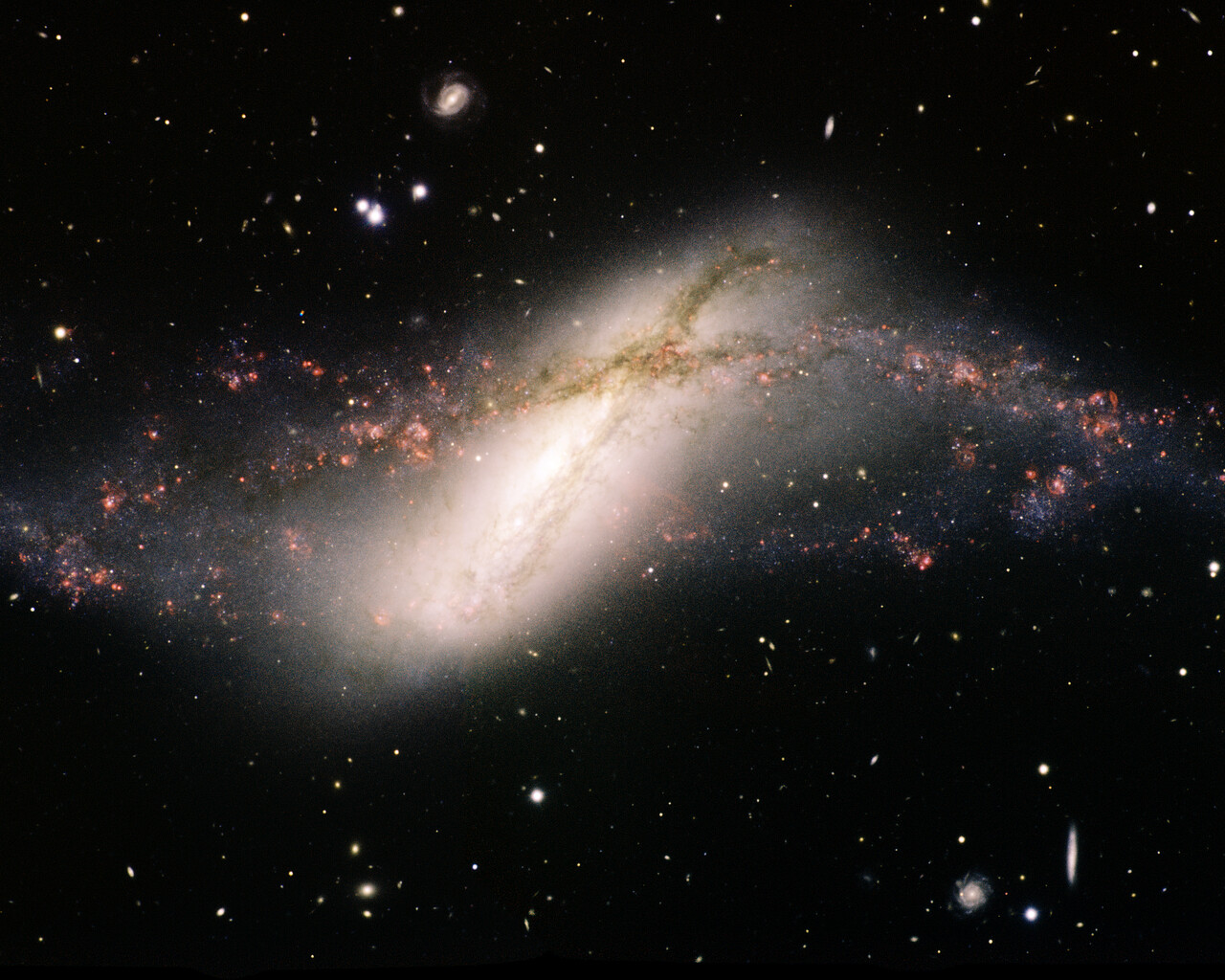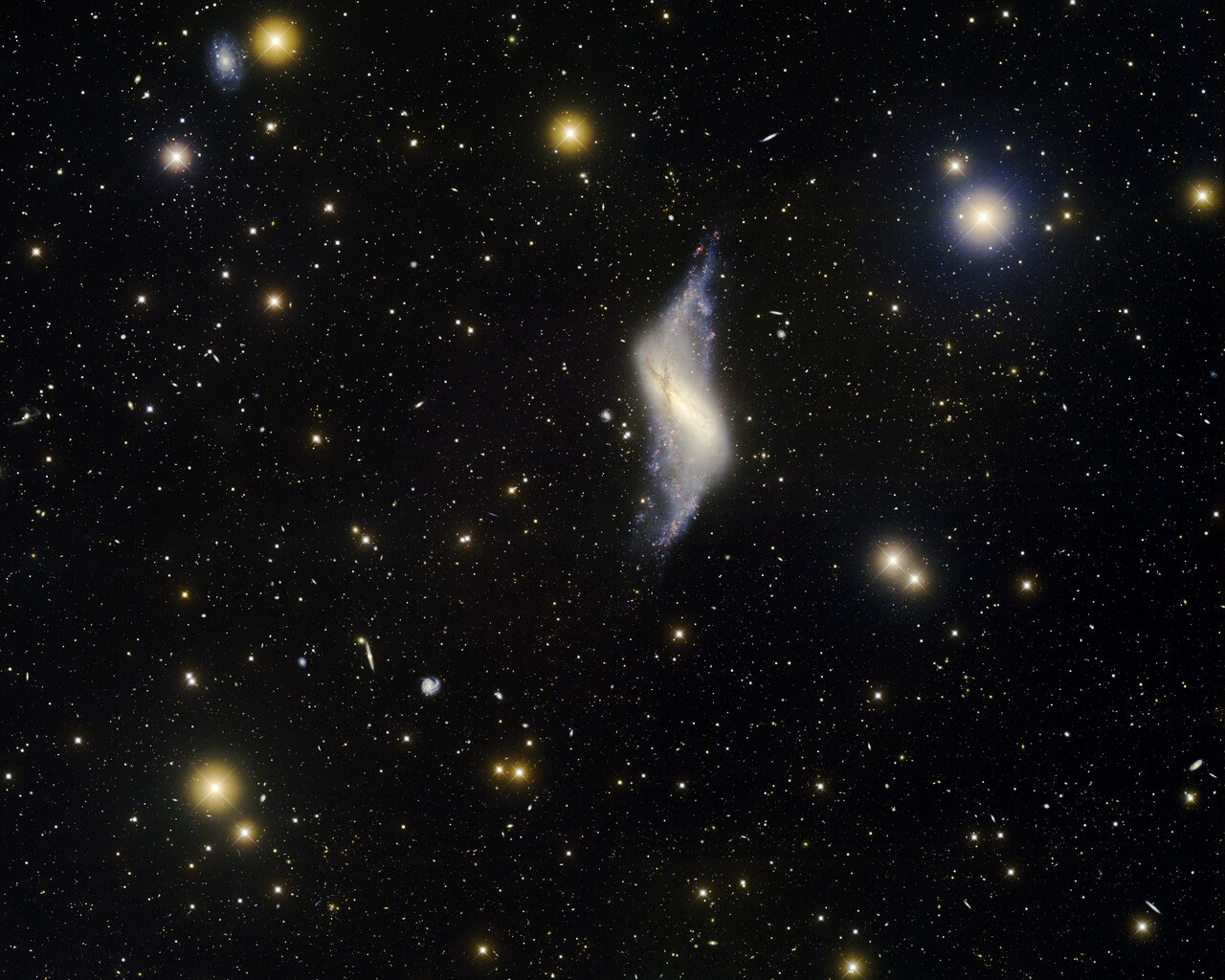Pisces
Origin
Initially, this constellation was named The Swallow in ancient Babylon as it marks the position in the year when the swallows return to the northern latitudes. It was positioned next to the goddess of love (And) and the god of wisdom and witchcraft (Aqr). In some West Asian cultures, a fish was depicted next to the goddess as her attribute. Other (small) fish surrounded the god depicted next to heavenly waters. Reflecting many transformations and reinterpretations in the Graeco-Babylonian world of the first millennium BCE, the huge swallow was first reinterpreted as a small bird next to Aqr and the original swallow tail of the huge image was changed into a connecting ribbon between this small swallow and the fish next to the goddess. This image of a bird and fish connected with a mysterious ribbon was then reinterpreted as stockfish, two fish connected with a ribbon, by changing the swallow into a fish.
Greek mythology, unable to explain the foreign images (of gods and swallow-fish etc.), has a story of Aphrodite (the goddess of love and beauty) and her son Eros (the god of love). According to one version of the myth, Aphrodite and Eros were walking along the banks of the Euphrates River when they encountered a monster named Typhon. To escape from the monster, Aphrodite and Eros transformed themselves into fish and leaped into the river.
In another Greek myth, the constellation Pisces is associated with the goddess Venus (the Roman equivalent of Aphrodite) and her son Cupid (the Roman equivalent of Eros). They are said to have transformed into fish to escape the monster Typhon and later tied themselves together with a cord to avoid losing each other.
Bright Stars
The brightest stars in the constellation Pisces are not among the brightest in the night sky. The two brightest stars in this constellation are:
- Alpherg (Eta Piscium) is the brightest star in Pisces shinging at magnitude 3.63 and lies 350 light years from Earth. It is a very closely spaced binary system.
- Alrescha (Alpha Piscium): Alrescha is a binary star system consisting of two very similar stars that shine with a combined magnitude of 3.82. The components are separated by only 1.8". This star marks the knot where the two fishes in the Pisces constellation are tied together.
- FumalSamakah (Beta Piscium): FumalSamakah an orange giant star 492 light years away shining at magnitude 4.48.


 Photo of the constellation Pisces produced by NOIRLab in collaboration with Eckhard Slawik, a German astrophotographer.
The annotations are from a standardized set of 88 western IAU constellations and stick figures from Sky & Telescope. Please find here a non-annotated version of the image.
Photo of the constellation Pisces produced by NOIRLab in collaboration with Eckhard Slawik, a German astrophotographer.
The annotations are from a standardized set of 88 western IAU constellations and stick figures from Sky & Telescope. Please find here a non-annotated version of the image.
Credit: E. Slawik/NOIRLab/NSF/AURA/M. Zamani
Notable Objects
Some notable objects in Pisces:
- Messier 74 (NGC 628): Messier 74 is a face-on spiral galaxy and one of the more challenging Messier objects to observe because of its low surface brightness. With a small telescope, you can see its spiral structure, although it will appear as a faint smudge. It's located near the star Eta Piscium.
- NGC 488: This is an intermediate spiral galaxy; it is within reach of a small telescope and can be observed as a faint, elongated patch of light.





















